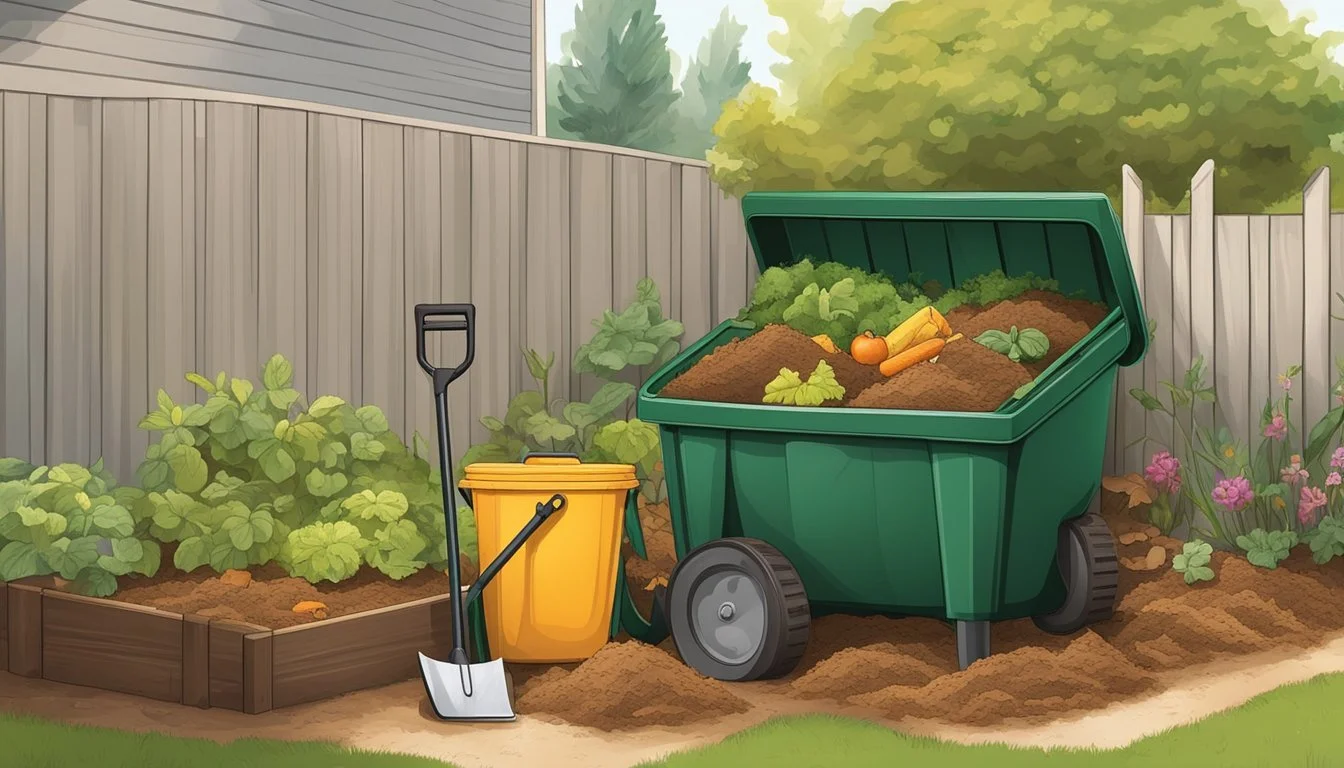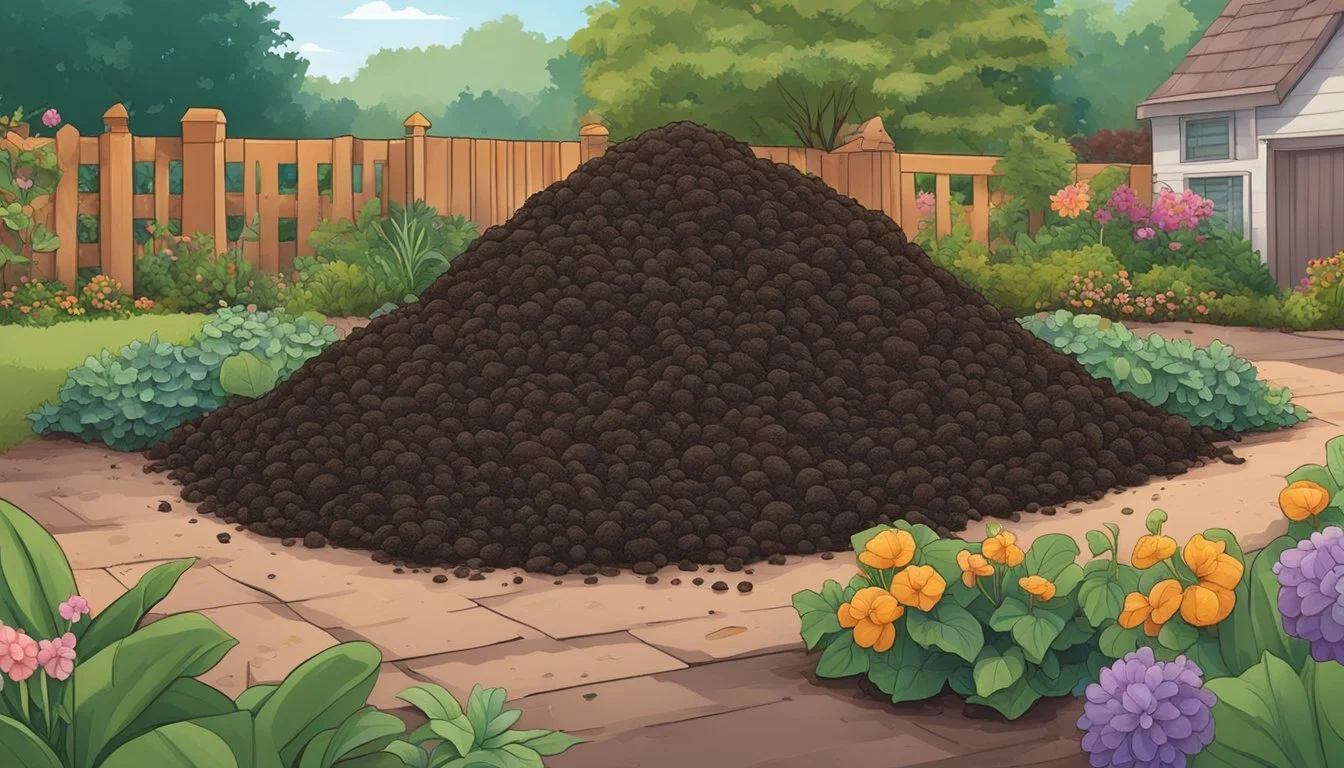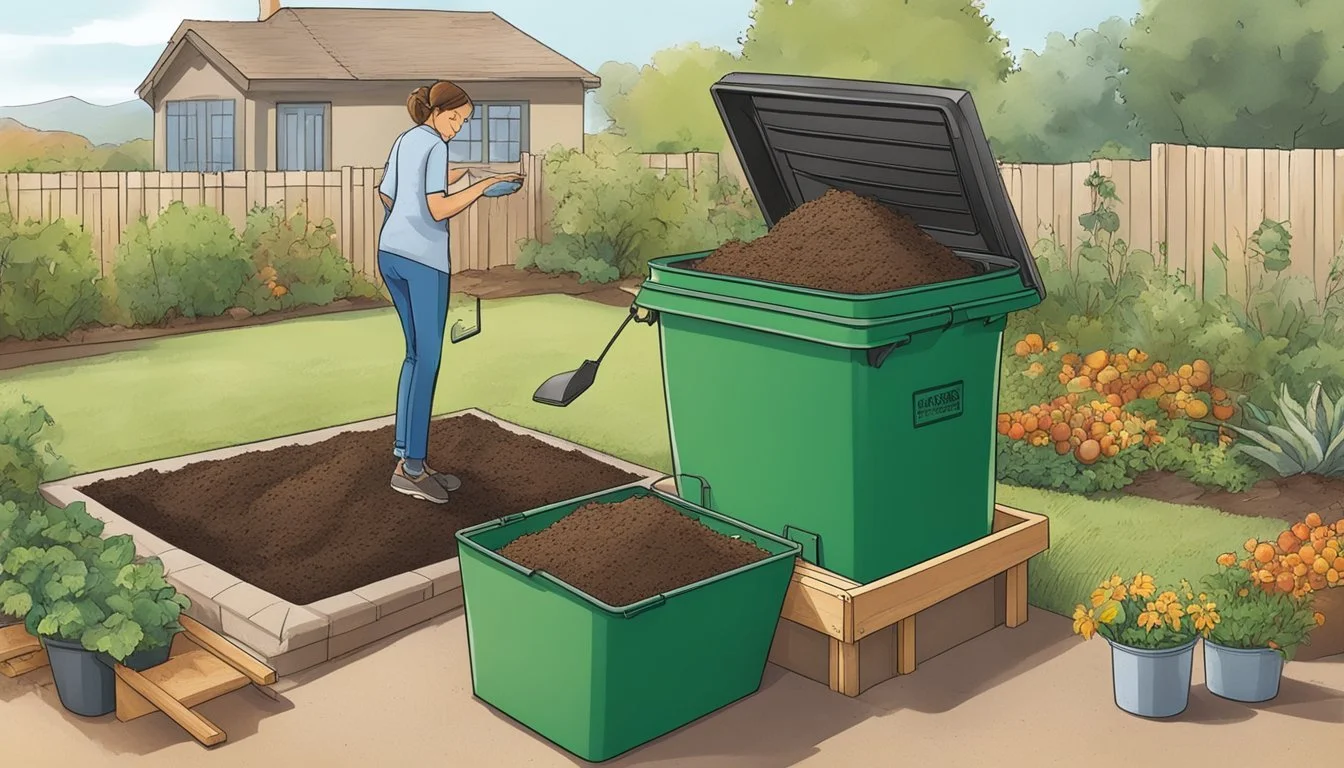Guide to Composting in Temecula, CA
Mastering Waste Conversion in Wine Country
Composting in Temecula, California, represents a commitment to sustainability and the reduction of waste. As urban sprawl continues and the environmental impacts of waste disposal become more pressing, residents of Temecula are turning to composting as a viable solution to reduce their carbon footprint. The process involves transforming organic waste materials into a nutrient-rich soil amendment, beneficial for gardening and landscaping. This natural cycle not only diverts waste from landfills but also enriches the soil, promotes water retention, and supports local ecosystems.
The city of Temecula has embraced composting by providing residents with resources and programs to encourage this eco-friendly practice. Given the city's agreement with a local environmental franchise, there are systems in place for the collection, transportation, and composting of solid waste, including yard debris and construction scraps. Additionally, Temecula residents can access community programs and information on optimum composting methods, such as the balance of nitrogen and carbon, through CalRecycle's home composting guide, which outlines the basic ingredients and procedures for successful composting.
By composting, individuals can make a significant difference in the sustainability of their community. It is a simple yet impactful way to contribute to Temecula's waste reduction goals while simultaneously enhancing one's own garden soil. Understanding the essentials of composting and participating in the city’s initiatives are steps towards a greener, more sustainable Temecula.
Understanding Composting Fundamentals
In Temecula, CA, mastering the basics of composting is essential for turning organic waste into a valuable amendment for landscaping and gardening. This section lays out a clear framework for anyone looking to understand and apply composting practices effectively.
What Is Composting?
Composting is the biological process of breaking down organic material into a humus-like substance known as compost. Through this process, materials like food scraps, yard waste, and other compostable items undergo decomposition facilitated by microbes, insects, and fungi. Composting transforms waste into nutrient-rich garden soil, providing a sustainable method for disposing of organic waste.
Benefits of Composting
The advantages of composting are wide-ranging. It enriches the soil, retaining moisture and suppressing plant diseases. The process reduces the need for chemical fertilizers, promoting higher yields of crops. Composting also minimizes methane emissions from landfills and lowers your carbon footprint, making it an environmentally friendly practice.
Components of Compost
The essential components for composting include a balance of carbon-rich materials and nitrogen-rich materials. Carbon, found in dry leaves, twigs, shredded paper, and sawdust, provides energy for compost microbes. Nitrogen, sourced from food scraps, coffee grounds, and lawn clippings, is a critical protein source for microbial growth. Oxygen and water are also crucial as they support aerobic decomposition and help to maintain the right moisture level in the compost pile.
Carbon (C): "Browns" like dry leaves, twigs, sawdust
Nitrogen (N): "Greens" like food scraps, coffee grounds
Oxygen: Achieved by turning the pile
Water: Balanced moisture promotes microbial activity
Composting Principles
Effective composting requires understanding a few key principles: aeration, temperature, and moisture. Aeration involves regularly turning the compost to introduce air, which prevents unpleasant odors and accelerates the breakdown process. Temperature is a good indicator of microbial activity; a hot compost pile means that decomposition is proceeding well. Adequate moisture is also necessary — the compost should be damp, like a wrung-out sponge, to foster microbial life without becoming anaerobic. Time, meanwhile, is the final ingredient, allowing these components to transform the organic material into compost.
Setting Up Your Composting System
When launching a composting project in Temecula, CA, one's success hinges on selecting an optimal location, the appropriate type of compost bin, and equipping oneself with the necessary tools for maintaining the system.
Choosing a Location
Selecting the right location for your compost system is critical. Ideally, it should be in a convenient spot near your garden or kitchen to make adding scraps easy. It should be a flat, well-drained area that is accessible year-round. Direct sunlight can help heat the compost, but partial shade will prevent it from drying out too quickly in Temecula's warm climate.
Types of Compost Bins
There are multiple compost bins suitable for backyard composting. Open piles work for large yards, while enclosed bins help deter pests and maintain moisture. Tumblers offer easy aeration by turning, which is critical for the composting process. Consider your available space and composting goals when deciding.
Building or Buying a Compost Bin
Whether to build or buy a compost bin depends on personal preferences and skills. Building one can be cost-effective, allowing for customization. However, ready-made options are convenient and available in various sizes and materials, suitable for a backyard or patio location.
Essential Composting Tools
To efficiently manage your compost, a few tools are essential:
Compost Thermometer: Monitor the pile's temperature to ensure proper microbial activity.
Aeration Tools: Tools like a pitchfork or compost turner help integrate oxygen into the pile, which is necessary for decomposition.
Closable Containers: Handy for collecting kitchen scraps before adding them to your compost system.
Each aspect—from choosing a strategic location to having the right tools like compost thermometers and aeration methods—integrates to create a fertile, transformative process in backyard composting.
Composting Methods
Composting in Temecula presents a variety of methods tailored to the preferences and needs of the community. Whether for personal use or community benefit, the techniques range from traditional to hot composting, each with unique benefits and considerations.
Traditional Composting
Traditional composting is the most basic form of composting, involving a balance of green (nitrogen-rich) and brown (carbon-rich) materials. Residents of Temecula can layer these materials in a bin or designated area of their yard, turning the pile occasionally to aid in decomposition. This method is well-suited for households that generate a moderate amount of organic waste.
Vermicomposting
Vermicomposting harnesses the natural process whereby worms convert organic wastes into high-quality compost. Suitable for indoor or outdoor use, it's a great option for those with limited space. Temecula's climate allows for year-round vermicomposting, making it a sustainable choice for organic waste reduction. Worm bins can be acquired or constructed, with red wigglers being the preferred worm species for the process.
Hot Composting
Hot composting is an accelerated technique that reaches higher temperatures, ensuring a faster breakdown of materials and pathogen eradication. Keeping the temperature between 135-160 degrees Fahrenheit is crucial, and achieving this requires careful management of moisture, aeration, and the carbon-to-nitrogen ratio. For those in Temecula who prefer a more time-efficient method, hot composting provides fertile soil in a shorter time frame.
Community and Shared Efforts
Community composting is encouraged through community gardens and local initiatives in Temecula, aligning with environmental goals and local government guidelines. Participation in community composting can happen under franchise agreements with private entities or through collaboration with local waste management services. These shared efforts can support large-scale composting operations that benefit parks, gardens, and municipal landscaping projects.
Maintaining Your Compost Pile
Maintaining a compost pile in Temecula requires attention to the balance of materials, appropriate moisture and aeration, regular temperature checks, and managing potential issues that arise.
Balancing Greens and Browns
For a healthy compost pile, one must maintain a proper balance between green materials, rich in nitrogen, such as grass clippings and coffee grounds, and brown materials, high in carbon, like straw and sawdust. Aiming for an equal mix, or a carbon ratio of about 30:1, is generally effective.
Water and Aeration
Compost needs moisture and air to support the decomposition process. The pile should be kept as damp as a wrung-out sponge, incorporating water as necessary. Regularly turning the pile ensures aeration, which facilitates the breakdown of organic material and prevents anaerobic processes that can cause odors.
Monitoring Temperature
Tracking the pile's temperature with a compost thermometer is critical; a temperature between 135-160°F indicates that the pile is actively composting. If the temperature is too low, it may need more nitrogen-rich materials or water; if too high, it may require additional aeration.
Dealing With Common Issues
Common issues in compost piles include unpleasant odors, the presence of rodents, and the survival of pathogens and weeds. To deter rodents, avoid adding meat or dairy products to the pile. To neutralize odors, turn the pile for aeration and adjust green and brown ratios. Pathogens and weeds can be mitigated through maintaining high temperatures and ensuring materials like grass clippings or weeds are well mixed into the center of the pile.
Using Finished Compost
Finished compost is a valuable amendment for garden soil, offering a nutrient-rich resource for landscaping and gardening projects. Utilizing mature compost effectively can enhance plant growth while ensuring safety and environmental benefits.
Determining Compost Maturity
To ensure the finished compost provides maximum benefits, one must first assess its maturity. Mature compost should be dark, crumbly, and have an earthy smell. It should also be free of weed seeds and pathogens that can negatively impact plant growth. The presence of living composting worms like those used in vermicomposting is an indication of active decomposition.
How to Use Compost
Incorporating compost into garden soil is straightforward:
Mix with soil: Blend the compost into your garden soil before planting to improve soil structure and nutrient content.
Mulch: Apply a layer on top of the soil around plants to conserve moisture and suppress weeds.
Compost is particularly beneficial for vegetable gardens where nutrient-rich soil is vital for optimal plant growth, as evidenced in the guidance on Eartheasy Guides & Articles.
Compost Tea and Extracts
Creating compost tea or extracts is another way to use finished compost. This liquid form allows for easy application of nutrients to plants' foliage or soil. To make compost tea:
Fill a burlap sack with compost.
Soak in water for several days.
Strain the liquid and apply it to your plants.
Compost tea can provide a quick nutrient boost, as the soluble nutrients are readily available for plant uptake.
Safety Considerations
When using finished compost, one must consider safety to prevent harm to plants and humans. Ensure the compost is properly cured, with no remaining heat to avoid root damage. Additionally, homemade compost should reach adequate temperatures to kill off any harmful microorganisms, especially if food scraps like vegetable peels and tea bags were used.
By using finished compost properly, one can enrich the soil and support a thriving garden landscape in an environmentally friendly manner.
Navigating Local Regulations and Resources
Temecula residents and businesses navigating compost regulations and resources can rely on a framework shaped by state legislation and local provisioning. This ensures both compliance and accessibility to composting facilities and services.
Understanding SB 1383
California's legislature passed SB 1383, landmark legislation aimed at reducing greenhouse gas emissions. The bill mandates the reduction of organic waste disposal and sets ambitious targets for recycling organic materials including food waste and green waste. Local authorities in Temecula must align with these requirements, impacting how residents and businesses approach composting.
Franchise Agreements and Local Services
Franchise agreements are formal contracts between local government entities like the city of Temecula and private waste haulers. They delineate the scope of recycling and waste collection services, including compost pick-up. Temecula's franchise agreements streamline the city’s recycling and composting efforts, coordinating with chosen service providers to manage organic waste effectively.
CalRecycle and State Guidelines
CalRecycle oversees the implementation of state-wide waste management guidelines, including those for composting. It enforces SB 1383 compliance, provides resources, and sets the standards for organic waste facilities and operations. Entities operating in Temecula must ensure their practices adhere to these regulations.
Temecula-Specific Composting Resources
Temecula provides local resources to facilitate composting. Residents can access information on backyard composting programs managed by the Riverside County Department of Waste Resources. Detailed guides and services directly address composting in the city, and the local government staff offer knowledgeable support for both public and private composting initiatives.
Tips and Tricks for Successful Composting
Successful composting in Temecula, CA, hinges on managing the right balance of materials and conditions to foster decomposition while keeping nuisances at bay.
Optimizing Your Mix
To create a nutrient-rich compost, balance your green and brown materials. Your compost requires green materials like kitchen scraps, which provide nitrogen, and brown materials like dried leaves, which supply carbon. The optimal ratio is approximately 3 parts brown to 1 part green. Regular aeration is critical to supply oxygen to microbes and speed up the composting process.
Avoiding Attracting Pests
It’s vital to avoid pests such as rodents and insects in your compost bin. Ensure that kitchen scraps are always covered with brown materials to mask odors. Avoid adding meat, dairy, or oily foods, which are more likely to attract pests. Using a compost bin with a secure lid is also an effective strategy to keep pests out.
Composting in Small Spaces
For residents with limited outdoor space, such as a patio, containers designed for composting make it possible to recycle organic waste efficiently. Choose a container that fits your space and has features for easy aeration to avoid odors and hasten decomposition. Compost tumblers are an excellent option, as they are sealed to prevent pests and can be easily turned to mix the compost.
Winter Composting Strategies
In colder months, composting can slow down as temperatures drop. To continue composting in winter, insulate your compost bin to retain heat. Larger piles retain heat better, so combining efforts with neighbors can be beneficial. Despite the cold, maintain the balance of nitrogen and carbon, and continue aeration when possible to keep the compost active.







